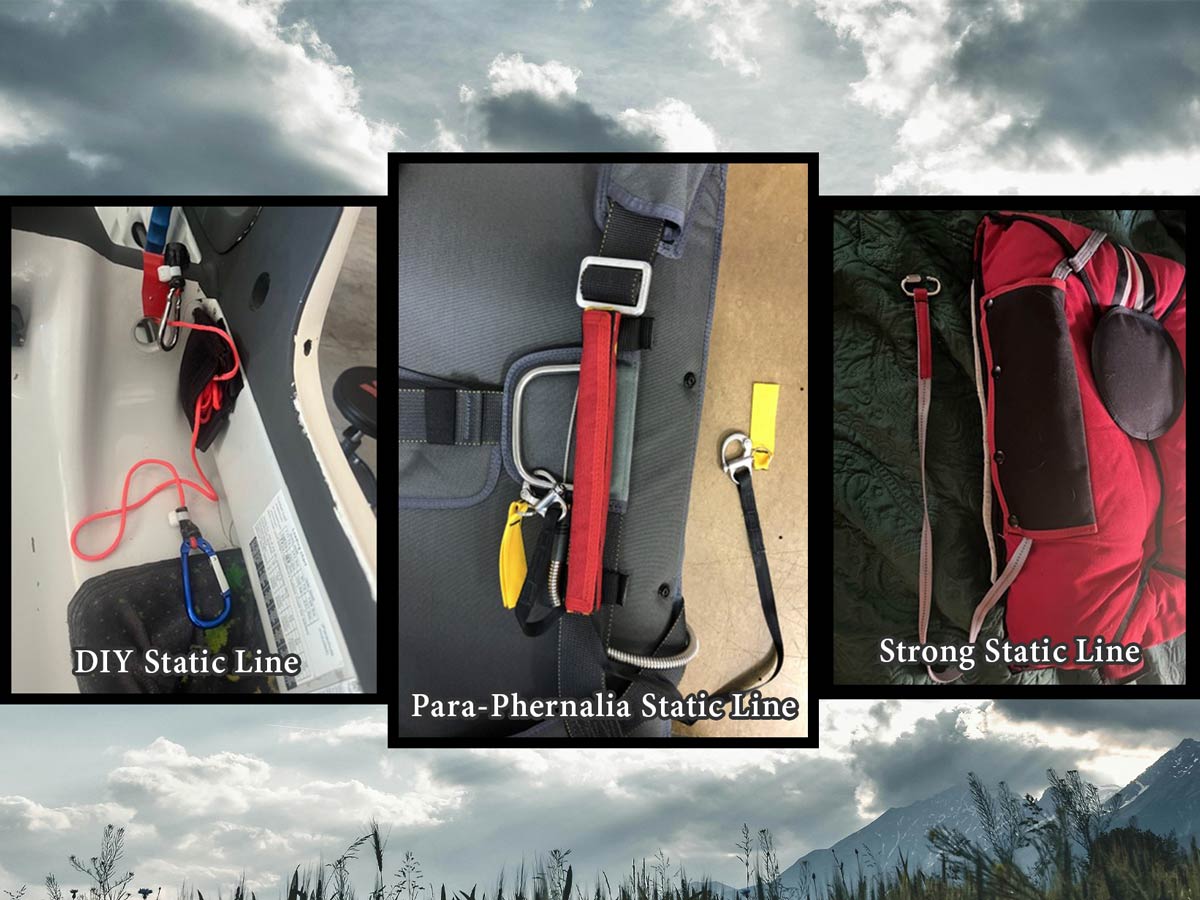To Jump

This title is not what you think. Or, is it? Have you ever noticed what those orange/red color rings, or that short piece of “red” tape over a hole are for usually on the left side of the glider cockpit? It is where the manufacturer is telling you to connect to your lifeline! An interesting fact is that the manufacturer does not say one thing about it in the GFM.
This short discussion may help. This short article is a so-called “PSA” (Public service announcement). How many glider pilots that you know, actually use that “ring” or that specially-made hole in the cockpit? It is for your “static line” connection! This is where you will attach your static line from your parachute. It’s your lifeline! Your lifeline can be manufactured or you can make one. Strong Parachutes will install a static line to almost any chute that they sell. Para-Phernalia, a parachute manufacturer makes them too. I purchased 2 from them recently for my two National 425’s. Any FAA Master Rigger can install (see photos). Very few glider pilots even use one! I wonder why? Or is it a lack of knowledge?
All of my chutes (T-6, E-75 Steerman, etc…) that I use have one, either installed by Strong or made by myself. Some conditions must be met. The recommendation is at least a 300-700 lbs test or strength line at least 35 feet in length (to clear most wings). Usually, 1/8 inch of reliable nylon works fine for breaking strength (approx. 575 lbs). To little strength the rope breaks and with too much it becomes overly bulky in the cockpit. How do we use such a device? Again, no guidance from the manufacturer.
The line itself should be folded or rolled in a way that unraveling is not hindered. The pack itself should attached to either the parachute or a place inside the glider that WILL NOT interfere with cockpit duties or controls. Remember to either disconnect your line prior to exiting the glider or you may have a chute deployed for no reason! After my flight, and before exiting the glider, I disconnect my belts and chute so I know that my line is safe.
Let’s review some of the experiences of leaving a glider. There are many stories and many that have jumped. In the past few years, I know of one incident in which there was an inflight breakup of the sailplane; usually pilot induced; occurred around 10000 to 13000 feet. One of the pilots bailed out, became unconscious for a period of the descent, and came too, at around 2000-3000 feet AGL He deployed his chute & landed. During the egress, he could have been hit in the head and rendered unconscious for a short time while falling (probably that happened). If this happens at 2000 feet AGL, you will become a statistic on the local news. Make a safety device work for you! A very small investment as well. Again, I ask, how many glider pilots do you know who use one?
If these pilots had a static line, and became unconscious after leaving the sailplane, their static line would be deployed, opening the chute and ensuring 100% survivability. The only disadvantage is a potentially long, cold descent in wave conditions. An emergency bail-out bottle should be attached or installed to mitigate risk, but it is still a better alternative to not having a static line.
Remember the steps: CANOPY, BELT & BUTT! Fly safe!
Photos by Shawn Knickerbocker




